What is a Funnel in Digital Marketing and How to Create one?
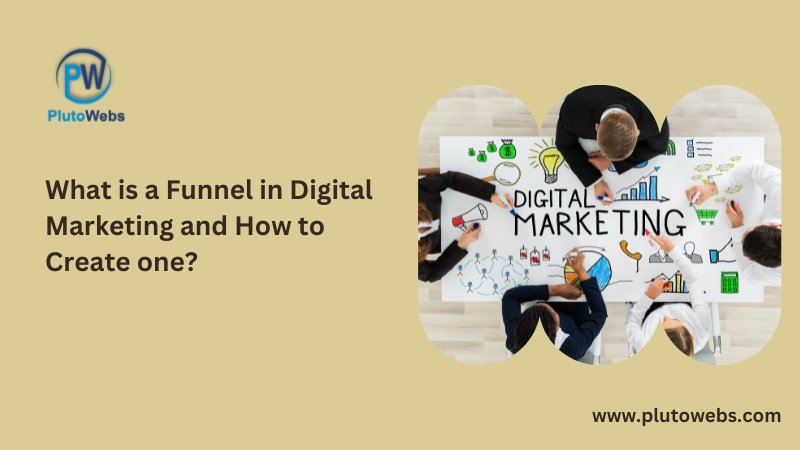
What is a Digital Marketing Funnel? If you want to succeed in your online business, then you need to create your online marketing funnel at this very moment. The step that a user takes to move from being an online explorer or a researcher to a full-fledged customer is regarded as a Digital Marketing funnel. The main goal of a Digital m/arketing funnel is to shoot qualified traffic to the top and optimise them with the help of content marketing and other scaffolding forms, to ultimately convert them into potential customers. So in all a Digital Marketing funnel is a strategic and visual representation of the steps taken by a customer in a whole path of journey, right from realising their issues, till they are converted into potential buyer or customers. Marketers all over the world have granted these steps widely and they are using them now so that in their marketing actions, they can gain huge success. If you want to achieve success in your marketing campaign, then you are recommended fully your marketing actions to better segments, which are based on the messages and the ads that you were doing your best to putting it forward to your audiences. Why do you Need a Digital Marketing Funnel? Most marketers suffer a huge loss in a paid campaign, especially in social media marketing. On the other hand, many of them gain a very good ROI (Return on Investment). Do you know why? It is because until and unless you have a healthy foundation, you cannot gain better results by recklessly throwing money and distributing the budgets simply on paid ads. The firms who are investing in marketing actions need to have a positive and proper ROI, by knowing themselves properly and what they need to do. You can achieve many opportunities at the platform and time that you prefer by helping attract your brand messages to your potential customers and conversing with them directly. All these are because of the Digital marketing funnel as it helps you to make you understand your target audiences. After you have known your audience, you can make your content personalised easily on the stage of the customer in their journey. There is no doubt that personalisation is loved by all. Enhancing personalisation can be helped by a proper Digital marketing Funnel where you can do copywriting and create your content easily focusing on your audience. When you are throwing your budget into various Digital marketing channels, it is for sure that you will receive a very good ROI for every penny spent by you. How to Create a Digital Marketing Funnel and that too a Successful one Here are some steps to create an effective and successful digital marketing channel. Define Your Audience When your e creating your Digital marketing channel, the first thing that you need to keep in mind is that you have to define your audience. You need to know your customers and their needs and demands, and how well you can fulfill all these things and serve their purpose or desire. You can create your customer profiles once you get to know the target market and it will help you to make the targeted messages and content which will cope with them. To determine the best channels and the content type to reach to you, you can use this information to use them reach you. Research your Competition So now you know your target customers and have a proper idea about your offerings to them, now it’s time to research the competitors around you. What are your competitors doing that is both working and not working and what different can you perform to differ from your competitors’ work all you have to think about. The main thing that you have to do is to learn and tweak your funnel so that it can be an effective one. You should use your competitors’ works as inspiration and you should not blindly copy their works. You simply don’t need to reinvent it, you simply have to make it much better. Set your Goals an Achievable one Now that you have n idea about digital marketing funnels, and now it’s time to set some achievable goals. So the goals that should be set should be based on the activities of both you and your customers, like signing a newsletter, buying products, downloading white apter, and many more. Once you set your goals, you need to make a plan of action that will help you to achieve them. All these plans should include all the steps that are required right from the begging to the end, right from creating unique and relevant content to convincing your users to click through your websites. It is also very important to create a proper timeline to create each of the steps so that you won’t be in problem. Content Strategy creation to Solve the Query of your Customers So now you got to know the different stages of a digital marketing funnel. Now it is time to make a content strategy to convert your leads to your customers. That means you have to create content that is relevant and useful for your target audiences at each stage of the Digital Marketing funnel. In the stage of awareness, your main aim is to capture your customers’ attention and make them introduce to your service or products. Nest is the purchase stage where your main aim is to make your potential customers make convinced in buying your products or services. That means you need to create contents which are effective and inspires confidence. You can perform this by creating product demos, testimonials, pricing pages, webinars, etc. Design your Website which will Convert Now you have a good idea for creating a proper and effective Digital marketing funnel. Now it’s time to design a website. You must keep in mind that the main aim of your website is converting your visitors into your leads, so you also have
What is an Ecommerce Conversion Rate and How to Increase it?

What is an E-commerce Conversion rate? The percentage of visitors to an eCommerce or an online website who purchased items from your website is defined as an E-commerce Conversion Rate. For a very good conversion rate, we need to go for Conversion Rate Optimisation (CRO). It helps in the improvement of the shopping experience driving KPI (Key Performance Indicator) specifically, which is usually sales. CRO can be conducted on category pages, landing pages, or maybe in any other customer’s touch point. This blog will also guide you to increase your E-commerce Conversion Rate. Calculation of E-commerce Conversion rate The E-commerce Conversion Rate is calculated by diving the no. of conversions by the total no. of visitors in a particular period. For Example, if the total number of visitors to a website is 5000 and the no. of conversions is 50, then it will be calculated as: (50/5000) x 100 = 1% Therefore, the Conversion Rate of the website is 1%. Before you proceed to increase your conversion rates, one thing you need to know is the current activities of your current website visitors, so that you can build up a standard E-commerce Conversion Rate and that too for your online store. What is a Good Ecommerce Conversion Rate? The average value of an E-commerce Conversion Rate is 2.5 to 3%. Despite doing everything, still, your expected E-commerce Conversion Rate will be 2 to 3%. The baseline goal for your online store is a 3% Conversion Rate. As soon as you reach that value, you can move forward to an advanced tactic of E-commerce Conversion Rate. Additional Metrics to Measure E-commerce Conversion Rate are:- Bounce Rate Exit Rate CTR or Click Through Rate Average Session Duration Average Page Depth Tools that can help to improve E-commerce Conversion Rate:- HotJar Quantcast Measure Google Analytics Various Ways to Increase your E-commerce Conversion Rate 1. Using High-Quality Images or Videos on the Product Pages If you have an E-commerce website, just imagine what would you like to have a look at in one such online store if you were a customer. If you are going to a local shop and buying something, you get to touch it and see every aspect of it, but in an online store, you can’t. So you have to give a detailed description of your products on the product page. Alongwith that, you should also provide a detailed image and a video, so that the customer gets a clear idea of what product you are offering. Using high-quality videos and images can help the users get a better visualisation of their interested products and with the help of this, you might get a chance to get a very good E-commerce Conversion Rate 2. The Offering of Free Shipping Most online shoppers have grown familiar with Amazon so they always expect certain standards. In the current market, especially in the online market, free shipping is necessary. If your online store does not allow free shipping, then your customer will neglect your E-commerce website and look for others. 3. Live Chat Software and Chatbots A customer might have a query regarding any product. Say for example, if you have an online store for gym equipment, then your customers might have queries related to it like whether there is any warranty and serving of the machines or equipment. So to answer their queries, you can live chat support software and chatbots so that you can have better interaction with your customers. Both of them are alternative options. In the case of chatbots, you have a human element which is replaced with chatbots of live chats. However, if a company opt for both option, especially if it interacts with a customer through chatbots even if during an off-hour, then it has a chance to get a very good response in getting better E-commerce Conversion Rate. 4. Set a Competitive Price If you’re selling products that most of the online stores similar to yours sell, then you need to keep your price of the product either within the average price of those websites or a bit less. Make sure that you adjust your prices in a frequent manner to test your customer’s reaction and the palpitation of the same. Your imagery and marketing quality will have a great influence on the price that someone is willing to pay. Market your products and your brands to appropriate customers with re right imagery and proper essgaing, you will surely get a very good amount of revenue. 5. Always Show Comments from the Shopping Cart If a customer can’t get a shopping cart, then they won’t be able to check out. One thing that you should always keep in mind that to display a shopping cart icon on your online shopping website. It will link to the page where a customer has selected the product(s) to buy. After entering an item in the cart, it helps the customer to check out the product(s) that they are ordering before making the final order and selecting the delivery option. Final Wrap Up As soon as COVID-19 emerged, most people started ordering various items online whether it is foods, medicines, or household items. As online shopping becomes a driving force to an extreme level, and too within retail and E-Commerce businesses. Having a successfully optimised website is condemning for both long and short-term business success. Boosting E-commerce Conversion Rate or opting for CRO is the main priority for every business because this, encourages the customers to do the sot important thing for you as well as them and that is buying your products.
Benefits of SEO (Search Engine Optimization)
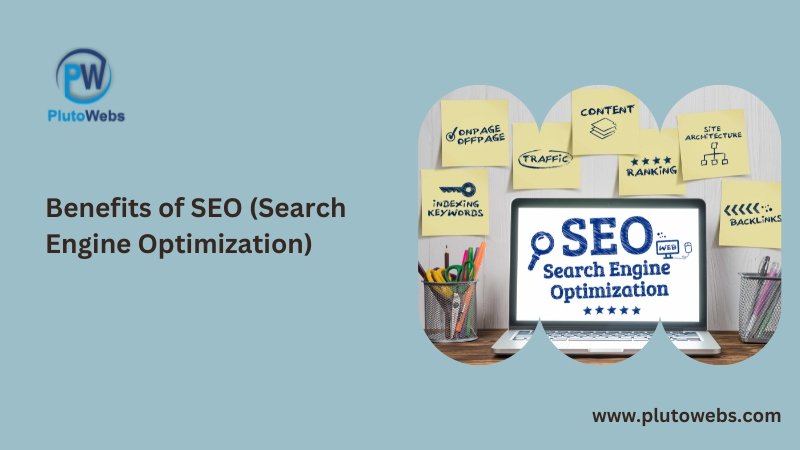
There are many aspects to creating an effective online marketing strategy. One of the key components to SEO for Small Business is proper online marketing. Without being properly optimized, a website faces the risk of never being found in search engine results pages (SERPS) and never seeing any sales. To remind you why SEO is still a crucial part of the online marketing formula, here are five top benefits that your small business website can obtain by utilizing a well-formed SEO strategy. INCREASED TRAFFIC FOR YOUR BUSINESS When a thorough search engine optimization strategy is put in place on your website, it creates a specific plan for every page. This results in pages that are optimized for Google’s crawlers and gives them the information that they need to feed the algorithm that determines rankings. This is done by optimizing individual title pages and producing content that is relevant to specific keywords and keyword phrases. When all of that occurs, top positions are given to your pages in the SERPS. Make sure to read my post about writing copy for search engine optimization. That results in an influx of increased traffic to your website and a higher chance of targeting not just impressions but clicks from customers who are interested in your specific products or services. If you include that with the creation of a killer website and well-planned site architecture, you have a recipe for better traction in your niche. Whether your business is in San Diego, or anywhere else a quality website is key. Keeping up with competition Just Keeping up with competition may be okay for some businesses, but you have a great advantage to increase sales and pass by rivals by incorporating a few tactics from SEO. Search engine optimization provides you with the ability to check out the competition and see which keywords they are using to drive traffic. 57% of customers say they won’t recommend a business with a poorly designed mobile site and 40 percent have turned to a competitor’s site after a bad experience. (Source: Google) This gives you the ability to take those keywords and check them against your keyword list. If you discover that you are not using any of those keywords or keyword phrases, you can create new pages that are specially made to highlight those keywords. In fact, it is good practice to take popular keywords from your SEO competition and place them on specific pages of your website. This provides your business with more valuable content that can attract potential customers With haphazard planning and no search engine optimization implementation on your site, search engines have no idea how to categorize your products or services. There is a specific way that content should be placed on your site so that it is not only highly enticing to potential customers but readable by search engine robots that scan its pages. You will achieve better conversion rates when search engine optimization tactics are used. This includes using natural language and keywords throughout your content that is not spammy. It also includes optimizing images and videos, disavowing malicious backlinks or creating new content that is optimized. ROI, Return on Investment Search engine optimization is highly measurable. The results are the same if you sell physical goods or only services — SEO works. Every aspect of your SEO efforts can be tracked and measured. One of the most important factors is monitoring traffic and watching your conversions. February 2015 polling by Econsultancy showed that 73% of in-house marketers and 76% of US agencies said SEO provided an excellent or good return on investment (ROI). (Source: eMarketer) By drilling down to a marketing strategy that engages with specific demographics, you can see how searches are being performed. If you have a website that sells physical products, you’re able to track the one keyword or keyword phrase that was used to make a sale. Service-based businesses can attribute keywords to contact forms that generate leads. These tactics will lead to a higher ROI as you consistently can refine which keywords you use to drive traffic to your website. Brand Awareness For Your Company Through Higher Rankings The credibility of your business plays a significant role in how people determine which links they will click when searching for specific products or services. It’s well known that people perceive the top listings in the SERPS as being the most credible and trustworthy. Google wants to give people a great user experience and places brands with valuable information at the top. These listings gain a significant amount of impressions and can result in an increase of brand awareness for your business. Being on the initial page of a popular keyword or phrase helps customers and potential customers associate specific keywords with your brand. It also increases the level of trust between you and your client base. When the pages from your website consistently reach and are seen at the top levels of the SERPS, it initiates a higher standard of trust that should produce more conversions and sales.
Benefits of Digital Marketing
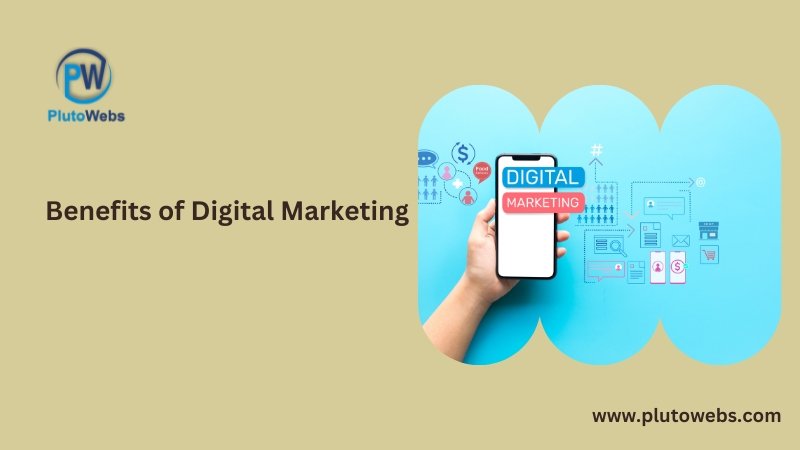
Digital marketing has become a normal part of doing business these days. This kind of marketing has gained popularity because it is effective in reaching a wider target market, since a huge number of customers spend their time online. Mobile devices have made this even easier because customers and targets can access the internet on-the-go from any place and at any time. Here are a few of the benefits of digital marketing, as opposed to more traditional methods: Reduced costs An online marketing strategy is easy to put together and costs very little compared to traditional methods of marketing. Radio, TV and print advertising can be costly compared to digital marketing. Digital marketing levels the playing field for businesses, as it doesn’t matter if your firm is small or large. With a solid marketing strategy, a small business can do just as well as larger businesses. Real Time Results One of the big advantages of digital marketing over traditional options is that it will offer you real time results. You don’t have to wait for weeks to start seeing a result. You can monitor traffic to your website, click through rates, views and likes as they happen. You can then use this data in order to tweak your approach and improve your success rate. Greater Exposure By focusing on digital marketing you potentially put your business directly into the hands of your target market – through their smartphones, tablets and computers. Social media has made it much easier to reach your target market and more than ever, people are researching products and services online. Greater Engagement By visiting your website, reading more about your services and products, reviewing your business, rating your service and ‘liking’ your company updates your target market can engage with your brand in more ways than ever before. Digital marketing also helps to encourage prospects, followers and clients to take a particular action. With the right call to action, you can encourage your targets to make a purchase decision and potentially even buy directly from your company online
Benefits of Mobile App
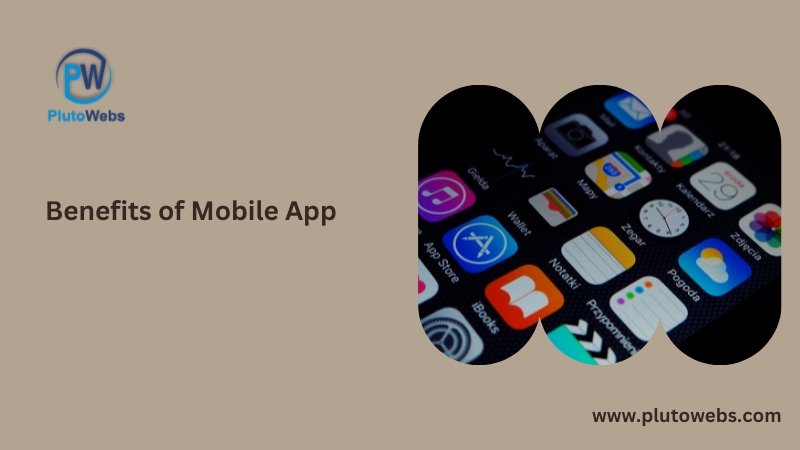
We take a look at the benefits of mobile apps for business and why a mobile responsive website and a native mobile app are not mutually exclusive. Optimizing your business for a mobile world is as important as ever. It’s projected that in 2017 over a third of the world’s population will own a smartphone while in Ireland 86% of the population already has access to one. Smartphone adoption figures like these highlight why mobile is the dominant channel for many businesses wishing to win and retain customers. Therefore one of the first steps when looking to improve the online presence of your business or organisation should be to mobilize your website. Responsive Web Design The term “Responsive Design” was coined by Ethan Marcotte back in 2010 and it quickly gained traction as a cost-effective way to modernize your website for each device size. Today the responsive approach to web design is integral to many mobile marketing strategies, and has been widely attributed with vast leaps in customer-friendly user experience and a dramatic up-tick in SEO performance and site conversions for visitors on mobile devices. On the flip-side, a poorly implemented responsive site can be slow and clunky, but only if it the correct techniques are not followed (UXPin). However a slick responsive site with correctly optimized images is a joy to behold. So moving on to native mobile apps – what are they and how can they help your business? What Are Native Mobile Apps? Ever since the release of The App Store by Apple in 2008, the demand for native mobile apps surpassed all expectations. Today an estimated 2.2 million apps are now available on the App Store while 2.6 million apps can be found on Google Play. What makes these apps very different to a mobile website is that they are developed specifically for one platform, and can take full advantage of all your smartphone device features. These features can include the device camera, GPS, accelerometer, compass, contact list and fingerprint scanning. Native apps can also use the device’s notification system with capabilities of working offline. Native Mobile Apps For Your Business When considering a native mobile app for your business you should define the objectives for the app. Objectives might include improving customer service, enhancing your loyalty program or improving internal communications. Your app should have a specific function that cannot effectively be accomplished on your responsive site. Some of the business benefits of native apps include the following: 1. More Completed Transactions Transactions on native mobile apps are completed 120% more for retailers than on mobile websites. This figure is significantly higher due to the experience a native app can provide for the customer while minimising distractions often provided by a web browser. Industries that can benefit: retail and travel. 2. Enhanced Customer Loyalty Loyalty programs can also be integrated into the platform offering points to customers who show the app at any location thus eliminating the need to carry a physical loyalty card, further enhancing the shopping experience for the customer. Industries that can benefit: retail and restaurant. 3. Improved Customer Engagement Customers who have your native app installed can be sent discounts, coupons and special offers using push notifications. Furthermore a business can use geo-targeting (GPS) to send time and location sensitive messages to customers who are close to one of their locations. Apps that are successful here can yield many benefits, as Arnotts saw with their Christmas Gift App for daily coupons. Industries that can benefit: retail, travel and telecommunications. 4. Self Service Convenience People don’t like to have to work for their information. A native mobile app will allow your customer base to easily find information on your company or products. With additional self service options customers can manage their accounts and even pay bills as necessary. Such features can also help reduce the need for a customer to contact the call center of a business. A great example of this type of app is the Thornton Recycling self-service app which provides customers with the ability to top up and manage their accounts while also receiving notifications regarding service days. Industries that can benefit: telecommunications, banking & finance, utilities and renewable & environment. 5. Better Internal Communication Internal business communications is an ideal area to look at for mobile efficiencies, empower employees to work away from their desk and make repeatable processes as easy and accessible as possible. These could include field service communications, reports and safety checks, holiday requests, expense submissions and training guides. All industries with businesses that use paper-based processes, an intranet or other back-end systems for communication and reports will benefit here. A Two-Pronged Approach? Once you’re familiar with the relative benefits of mobile responsive sites and native apps it becomes clear that they are not mutually exclusive so a two-pronged approach often makes the most sense. Where a responsive website excels is in customer discovery and information, whilst a native app can excel in many areas such as customer account management and loyalty, as well as mobile business communications and internal reporting. In the end, the key takeaway is that each channel can fulfill different but complementary objectives based on your specific business needs.
Benefits of Having E-Commerce Websites
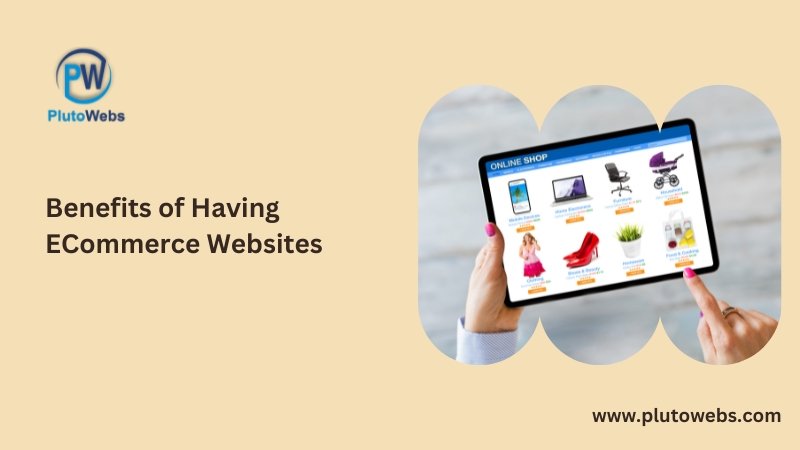
E-Commerce is a word, which is commonly used to define any kind of business dealing that includes the passing of information through the Internet. In the last era, we have seen e-Commerce websites working on the Internet. So, the question arises what is motivating this new development and what are the supposed benefits that are attracting so many industries to create e-Commerce websites? Some of the advantages of E-Commerce websites are explained below: 1- Increase customer’s trust: A beautifully designed and creatively developed website generates trust for your clients. They know it very well that if you take care of your website with proper attention and actively than you must treat your clients with the similar technique. 2- Accessibility & Easiness: There are many people in the world for whom, e-Commerce converts one of the favorite ways of shopping because the found online shopping an easy and convenience. They are permitted to purchase goods or services from their home at any time. The greatest thing about it is purchasing opportunities that are rapid, appropriate and user-friendly with the capability to transfer funds online. Because of its accessibility, buyers can save their lots of time and money by searching their goods easily and making buying online. 3- Fascinate New Clients with Search Engine Visibility: As we know that physical marketing is the route by branding and relations. But, online marketing is also motivating by traffic that originates from search engines. For clients, it is not common to follow a connection in the search engine results and visit on an e-commerce website that they never heard of. More Search Engine Visibility will attract more people to your e-commerce website. 4- Keep Birds Eye on Buyers’ Buying Habit: E-commerce traders can effortlessly keep a continuous eye on buyers’ buying habits and comforts to adapt their suggestion suit to buyers’ desires and this is the best thing of e-commerce. By satisfying their requirements continuously, you can increase your continuing relationship with them and build long-term relations. 5- Selling Products globally: If you are running a store, it will be bounded to the geographical region for which you can provide service, but on the other hand with an e-Commerce website, you can sell your goods and services globally. The complete world is your playground, where you can trade your whole variety of goods without any geographical restrictions. Furthermore, the remaining restriction of geography has dissolved by m-commerce that is also known as mobile commerce. 6- Services provided 24*7/365: E-commerce traders can enjoy that store will remain open 24/7/365 because they can run e-commerce websites all the time. This is a way to increase their sales by increasing their number of orders. Though, it is also helpful for buyers as they can buy products when they need no matter whether it is morning or midnight.
